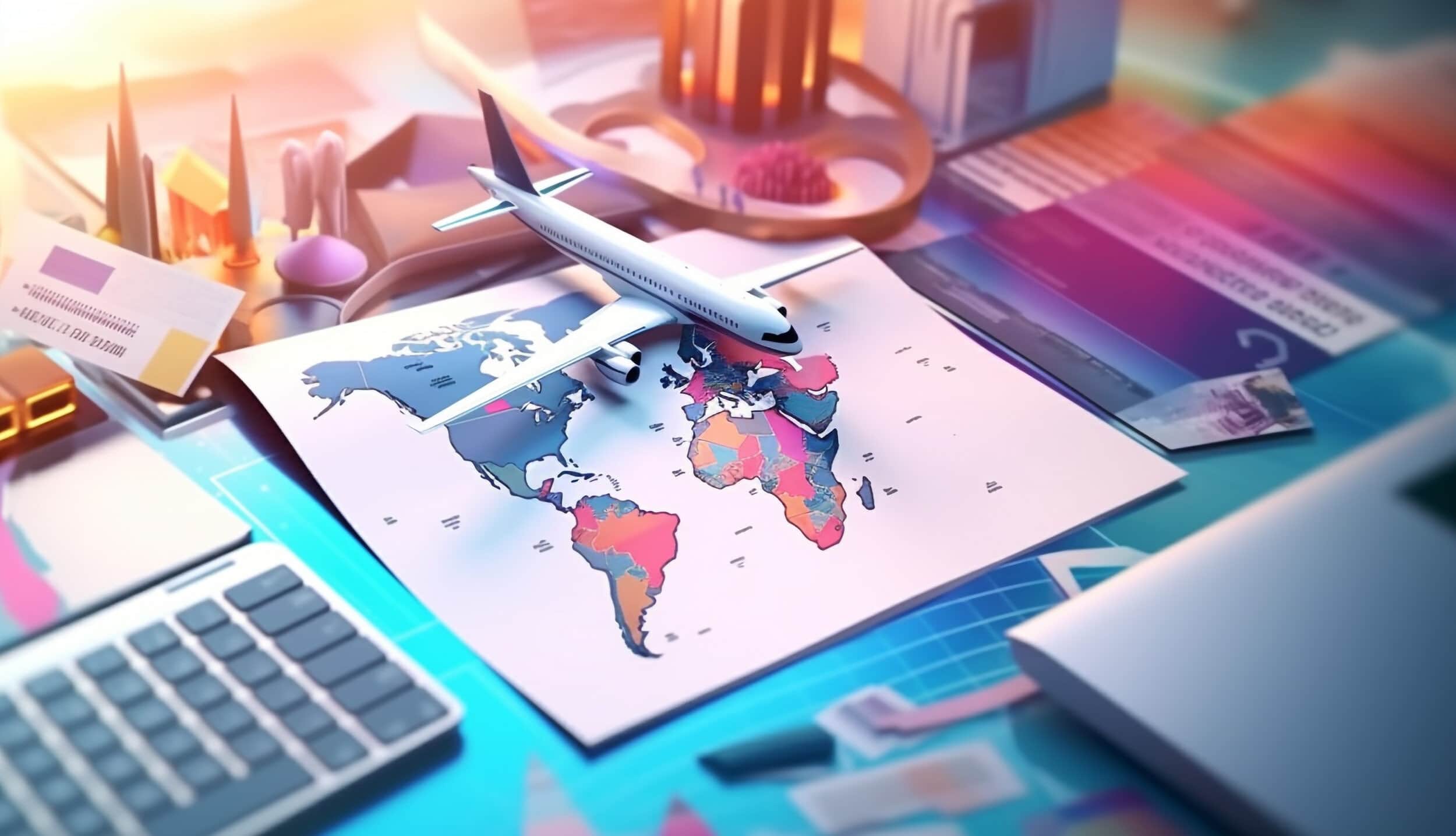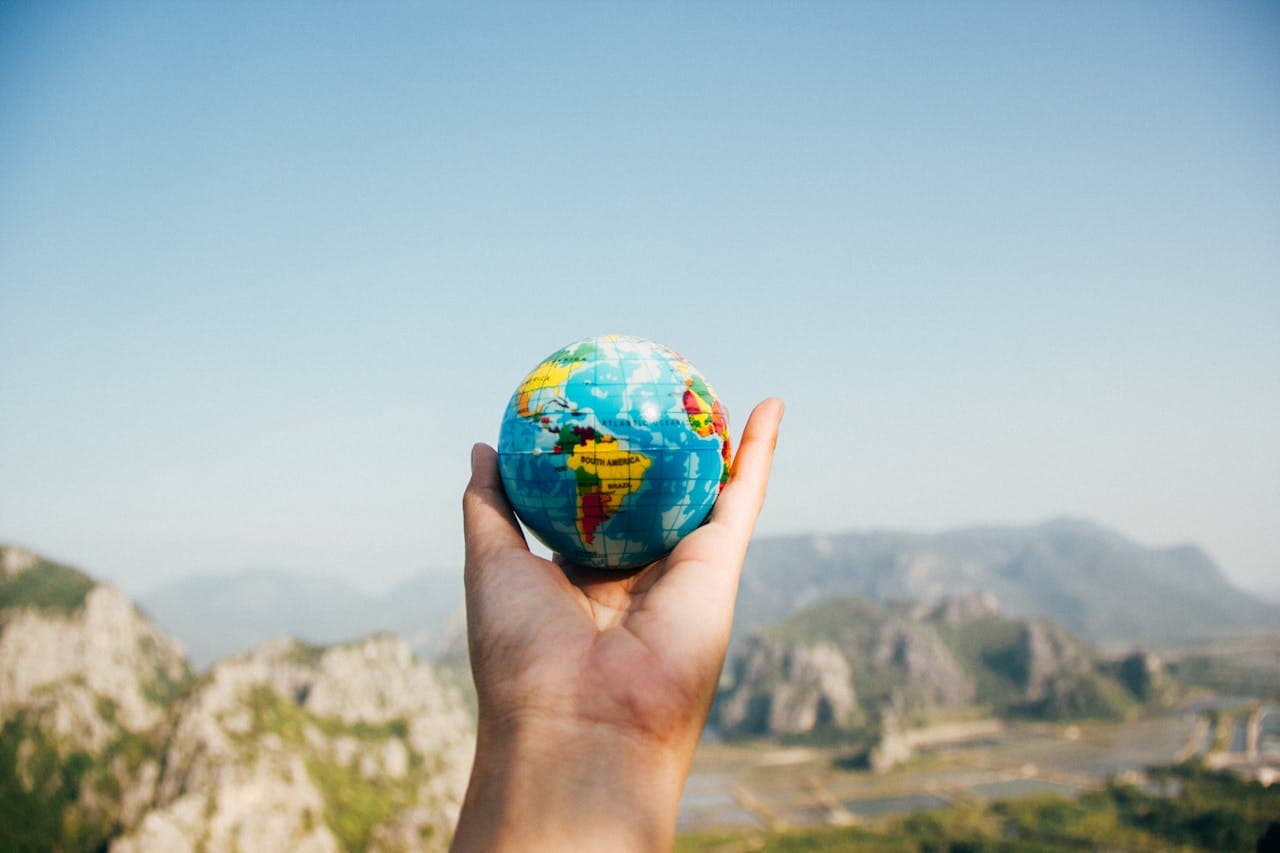What Is Global Trade?
Any economic transaction between two nations is considered global trade.
This includes the exchange of:
- Physical goods
- Digital items
- Payment for services
- Intellectual property
In theory, global and domestic trade are only differentiated by the kind of parties involved. Domestic trade occurs within a single country and global trade between countries.
However, the international laws and logistics at play make selling and buying internationally more complicated. Tariffs, sanctions, trade treaties, watch lists, and more must all be considered when conducting international business. Any business that makes international transactions must navigate the sea of global trade.
Current models show that $28.5 Trillion USD worth of global trade happens yearly.
Broadly, all global trade can be classified as:
- Export. A product sold to an international market.
- Import. A product bought from an international market.
Different countries have access to different resources–some have cheap or specialized labor, plentiful land, deposits of natural resources, or advanced technology. Global trade is all about making the most out of what a nation has while meeting the demands for what it doesn’t have.
For example, the United States mines more gold than any other country, but Switzerland is famous for its luxury watches made from gold.
The United States mines gold and exports it to Switzerland. Switzerland imports that gold and then uses it to make luxury watches. Switzerland exports some of those watches to the United States, which imports them.
This complicated back- and- forth of goods and services is the foundation of the global economy.
How is Global Trade Organized?
Global trade and the rules that govern it have evolved along with human civilization.
Early Examples of Global Trade
The onset of global trade typically involved individual nations making arrangements based on their own unique interests.
One of the oldest global trade networks dates back to 2000 BCE and the formation of the Maritime Jade Road. This network facilitated the trade of jade throughout southeast Asia, usually mined in Taiwan, carved in the Philippines, and then exported throughout the region.
National economies have grown more and more dependent on each other since. The famous Silk Road facilitated trade among three continents worth of nations. Its vast economic value continued for more than 1,500 years.
Global trade has also motivated foreign policy and military action.
Rome conquered Egypt in 30CE to solidify its ability to acquire grain, and ancient Athens attempted to form alliances by sanctioning any who refused.
The Birth of Modern Trade Law
After the events of World War II, global trade became more standardized across the world.
In an effort to boost the war-torn global economy, 23 nations signed the unprecedented General Agreement on Tariffs and Trade (GATT) in Geneva on Oct 30th, 1947. This agreement minimized tariffs, quotas, and other barriers to free trade. It remained the most prominent global trade agreement for nearly half a century.
In 1995, the GATT was expanded into a new agreement, ratified by 123 nations. This new treaty would continue the GATT’s work on an even larger scale and lead to the creation of the World Trade Organization (WTO).
Who Governs Global Trade?
WTO remains the only international organization that governs trade. Since its founding in 1995, it has grown to include 164 members representing 98% of all commerce globally.
The WTO describes its five main goals as:
- Improving people’s lives. WTO encourages trade as a way to raise the global standard of living, provide employment, increase income in general, and best use the world’s resources.
- Negotiating trade rules. The WTO operates on a philosophy that free trade is usually better and helps to negotiate a more open market. In some circumstances, it does enforce trade restrictions, for example, in cases to protect the environment.
- Overseeing WTO agreements. Maintaining the core principles agreed to by its member states and keeping any new trade policy within the bounds of WTO standards is vitally important for global trade cohesion.
- Maintaining open trade. This includes making trade policy as transparent and open as possible, so investors feel confident about the future of their ventures.
- Settling disputes. Each nation will naturally seek an advantage that can lead to trade arguments. The WTO acts as a mediator in such circumstances.
What Are the Rules of Global Trade?
The World Trade Organization (WTO) serves as the global arena for trade negotiations, dispute resolutions, and establishing norms for international commerce. Members of the WTO commit to abide by a set of principles that form the foundation of the global trading system. These principles not only guide trade relations among member states but also influence businesses and economies worldwide. Here are the core principles:
- Trade Without Discrimination: At the heart of the WTO’s rules is the principle of non-discrimination. This means that once a country grants a certain trading advantage, like reduced tariffs, to one WTO member, it must do the same for all other WTO members. There are specific conditions and exceptions, but the general rule remains to provide an equal playing field.
- Freer Trade – Gradually, Through Negotiation: Barriers to trade, such as tariffs and quotas, are progressively reduced through negotiations among member states. This promotes an open global market and makes trade smoother and more predictable for everyone.
- Predictability – Through Binding and Transparency: One of the primary benefits of the WTO system is the assurance that trade barriers won’t be raised arbitrarily. When countries commit to limits on tariffs, they are binding. This ensures predictability which businesses value greatly. Moreover, transparency obligations require members to publish their trade measures and notify the WTO about changes, ensuring a clear and transparent trading environment.
- Promoting Fair Competition: This principle is essential for ensuring a level playing field in global trade. The WTO agreements prohibit practices such as dumping (selling products at an unfairly low price) and provide disciplines on subsidies and countervailing measures, ensuring that trade flows as smoothly and predictably as possible.
- Encouraging Development and Economic Reform: Recognizing the varying levels of development among its member countries, the WTO agreements contain provisions to support developing and least-developed countries. The aim is to help these nations better integrate into the global trading system and seek the benefits of international trade for their growth and development.
Global Trade Working For You
The world is more interconnected than ever before. Its web of global trade is more than just a way to make phones. It opens our business up to a near-limitless number of markets. No longer are our business interests confined to the local community or even our own country.
Navigating the organizations and rules of this network will allow our business to prosper and continue expanding like never before.


